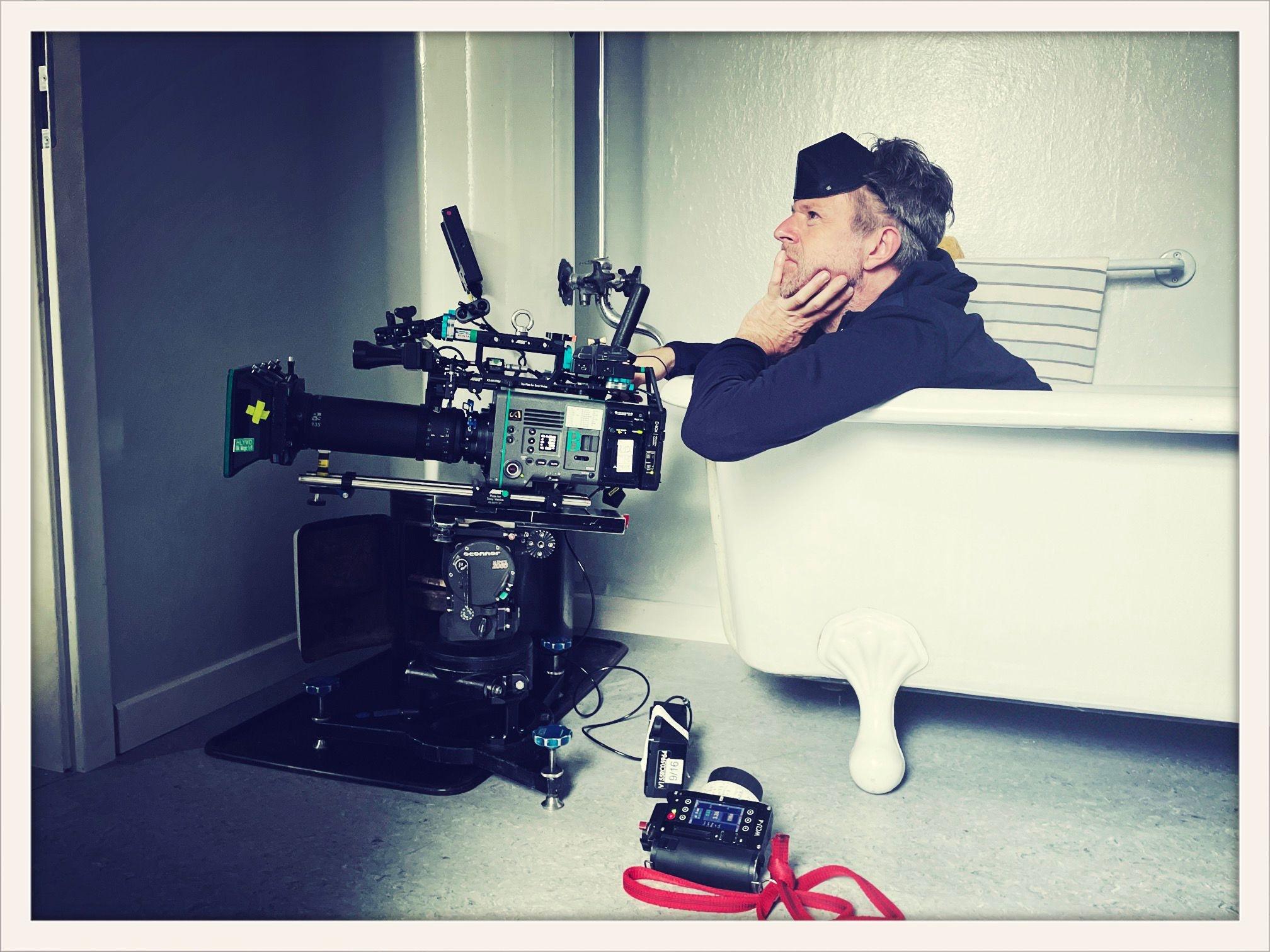
Filip Zumbrunn’s passion for visual storytelling began in Zurich, Switzerland. Raised in a household filled with art and music, his early years were shaped by the creative influences of his parents—a graphic designer mother and a photographer father. From an early age, he was captivated by the magic of still and of moving images. But he was also talented in playing the Violoncello and the Trumpet and he learned the drums by himself. So in his late teenage years, being a drummer in a punk band, he had to decide to follow either the music or the passion of the cinema. Inspired by the transformative nature of film, he chose to embark on a quest to explore the depths of visual storytelling.
In a time when formal film education in Switzerland was scarce, he charted his own course into the industry, starting as a production assistant. With each role he undertook, from mastering lighting techniques to improving his skills as an assistant and focus puller, Filip absorbed knowledge and honed his craft, driven by an unwavering determination to bring stories to life on screen.

By his thirties, Filip had emerged as a cinematographer, ready to make his mark on the world of filmmaking. His breakthrough came unexpectedly during a hiatus from the industry when he co-owned a bar in Zurich’s bustling red-light district. It was here that fate intervened, as a low-budget film project unfolded right outside the bar’s doors. This project, “Strähl,” would not only reignite Filip’s passion for filmmaking but also serve as his debut as a cinematographer. “Strähl,” released in 2003, garnered critical acclaim for its innovative visual style and compelling storytelling. Set against the backdrop of Zurich’s urban landscape, the film captured the raw essence of life with an authenticity that resonated deeply with audiences.
Since then, Filip has embarked on a diverse array of projects, boldly exploring new genres and narratives. From intimate documentaries to commercials, to bold narrative features, he has showcased his versatility and artistic vision, leaving an indelible mark on the Swiss film industry – an industry he refers to as “family”.
Filip Zumbrunn’s love for handheld camera movements is another interesting aspect of his career. He understands it’s one of the best ways to make the audience feel like they’re right there in the moment with the characters since the camera movement connects with the actors, trying to “breathe together” and capture the real emotions of each scene.
One of the most rewarding aspects of Filip’s journey is the collaborative process of pre production, where he works closely with directors to visualize, plan and bring stories to life. For him, being a good cinematographer goes beyond technical expertise—it’s about empathy, versatility, and the ability to capture the essence of each story.

Filip Zumbrunn emphasizes the profound impact of collaboration on creative endeavors, highlighting the importance of working with people who inspire and uplift. He believes that surrounding oneself with individuals who evoke inspiration leads to a better outcome, as shared passion elevates the quality of work. For Filip, the essence of collaboration lies in the mutual exchange of enthusiasm and inspiration, where genuine connections fuel creativity and enhance the overall experience. His approach to selecting the best crew is a collaborative effort, often undertaken with his friend and professional partner, Orit Teply, a seasoned focus puller. Together, they meticulously curate teams that complement each other’s strengths and enhance the creative process. Their partnership exemplifies the importance of collaboration and mutual respect in the filmmaking industry. Orit plays an important role, not only on set, but also in assisting with the process of sensibly building a team.

After just finishing a Netflix period series, Filip Zumbrunn’s current project is a German-Swiss co-production set to unfold against the captivating backdrops of Germany and Japan. With the working title “Der Frosch und das Wasser”, the film embarks on an enigmatic exploration of the human experience through the eyes of its protagonist, Buschi, a kid with Down Syndrome.
Zumbrunn emphasizes the diverse skill set required of a cinematographer, highlighting the need to balance artistic vision with technical proficiency. “A cinematographer is an artist, a technician,” he asserts, underlining the importance of seamlessly blending creativity with technical expertise to achieve the desired visual outcome. However, the responsibilities of a cinematographer extend beyond the technical realm. Zumbrunn emphasizes the diplomatic aspect of the role, noting that leading a crew requires effective communication, motivation, and the ability to foster a positive working environment. Moreover, Zumbrunn acknowledges the financial considerations inherent in filmmaking. From budgeting for equipment to assessing the feasibility of lighting setups, financial acumen is essential for ensuring the success of a project. For Zumbrunn, adaptability and openness are also key qualities of a good cinematographer. Each project presents unique challenges and opportunities, and it’s crucial to approach each one with a fresh perspective. “You should never come into a routine,” he advises, emphasizing the importance of remaining receptive to new influences and ideas.

Central to Zumbrunn’s philosophy is the belief in continuous learning and improvement. He views cinematography as a lifelong practice, where there is always room for growth and development. “You never outlearn it at all,” he asserts, highlighting the importance of persistence and dedication in mastering the craft. And reinforcing his role as a reference for the future generation of cinematographers.























